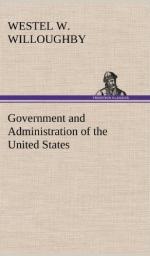3. _#Subsidiary and Minor Coins.#_—All coins of a lower denomination than $1 belong to one or the other of these two classes. There are three subsidiary coins, the fifty cent, the twenty-five cent, and the ten cent pieces. The three cent piece is no longer coined. All other coins are minor coins. The peculiarity of the subsidiary and minor coins is that they are, as compared with the standard coins (gold and silver dollars), of a greater value than the value of the metal they contain. The subsidiary coins are legal-tender to the amount of $10, the minor to the extent of twenty-five cents. By legal-tender is meant that the government has ordered that it must be received in payment of all debts and articles bought. Gold coin and the silver dollars and certificates are legal-tender to any amount.
4. _#Treasury Notes.#_—Under this head are included that form of money ordinarily known as “greenbacks,” from the color of their backs. They were originally issued during the civil war, and are promissory notes on the part of the government, and as such constitute a portion of the debt of the government. They are paper, which of itself is of no value, and no coin is deposited in the Treasury which they represent, as in the case of the gold and silver certificates. They thus cost the government nothing, and, as they are made legal-tender, and paid out by the government, they were just so much clear gain to it. At first they were not redeemable, i.e., exchangeable for coin at the Treasury, but since 1879 they are, and are therefore just as valuable now as any other form of money, though formerly worth much less than their face value. One hundred million dollars in gold is kept on deposit in the Treasury for their redemption.
5. _#Notes of National Banks.#_—This is the one form of money that is not issued directly by the Federal government, but through the agency of what is called our “National Banking System,” which may be thus described: A national bank can be organized by any number of men, provided the capital stock of the bank is at least $100,000. One-third of the capital must then be invested in government bonds and deposited in the United States Treasury. The bank may then issue notes to the extent of 90 per cent, of such deposit. Such notes are thus amply secured by the deposits with the government. The government guarantees their payment, and so they circulate as well as the certificates issued directly by the government. Thus a great deal of the paper money in circulation is issued by the national banks, which must, on demand, be redeemed with coin, and, in case of failure of the banks, are paid by the government, which reimburses itself from the deposits. A bank-note differs from a Treasury note in two particulars. The Treasury note or “greenback” is a promise of the government, and is legal-tender in payment of all private debts; the bank-note is the promise of a private company, and is not legal-tender. A bank-note is said to be paid when the bank gives a greenback or coin for it. A greenback is said to be paid or redeemed when the government gives gold for it.




